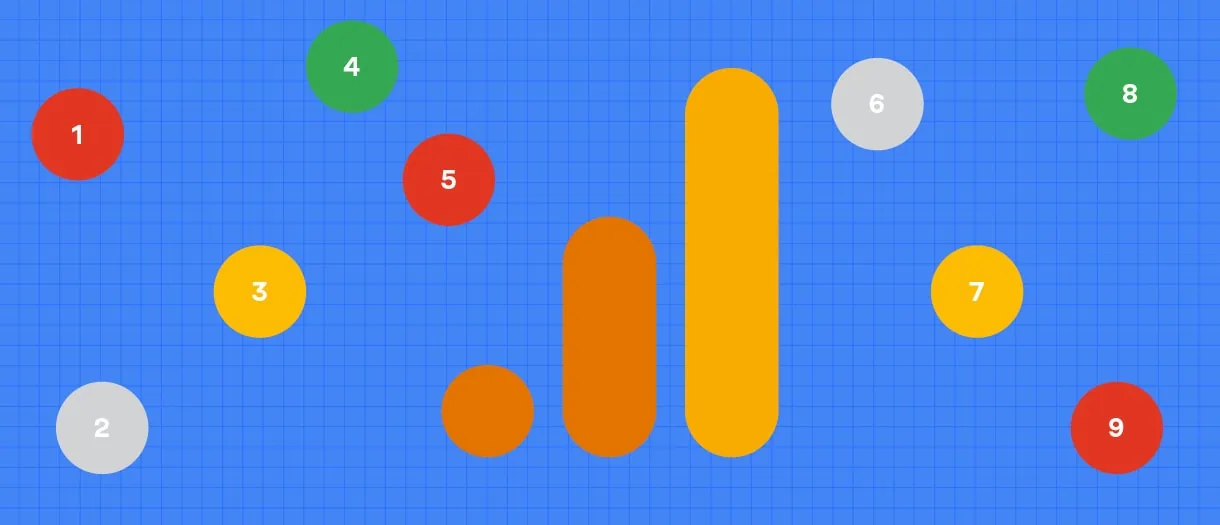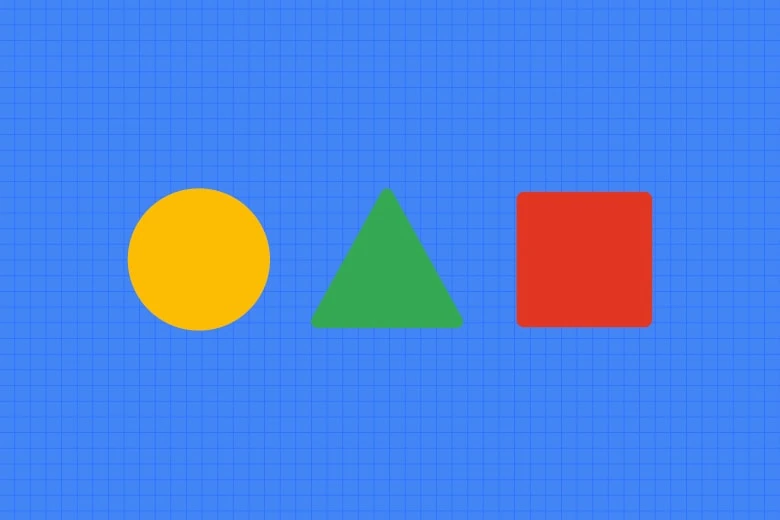GA4 has arrived—here are 9 ways to leverage its power

Summary
Google Analytics 4’s predecessor, Universal Analytics, was released back in 2012, when only 20% of web traffic was performed on mobile. The internet is radically different now, and at the core of Google’s latest update is
a unified experience between sites and apps, a clearer picture of user activity, code-free tag tracking, and a deeper understanding of user journeys. Use these 9 tips to get the most out of this powerful tool.
As of July 2023, Google Analytics 4 replaces Universal Analytics. Even after you’ve migrated your website analytics, there’s a lot to know about this powerful upgrade, which now includes AI, machine learning and improved data protection.
We know, we know. Every time you turn around, something in Google Analytics has changed, and you have to figure out the latest “improvements.”
Here at Goods & Services Branding, we specialize in analytics (among other things), and “why can’t Google leave well enough alone?” has been a complaint often overheard over the years.
But this time, Google’s latest analytics update is amazing—and awesome!
The next-generation Google Analytics 4 (GA4) provides an integrated, cross-platform, cross-device overview of your audience’s journey on your website(s) and app(s)—now called “properties”—while still being privacy-centric. It’s a major upgrade from Universal Analytics (UA), which was first released all the way back in 2012, when web traffic from mobile was less than 20% and cookie tracking was all the rage.
GA4 is designed for the future, implementing AI, machine learning, data protection, and unified reporting and analysis from all properties. Any new website or app that you now set up on Google Analytics will, by default, be set as a GA4 property.
If you’ve already switched, been automatically switched or haven’t yet made a move (despite receiving Google’s multiple reminders to switch—hey, we don’t judge!), here are some of the top features you need to know.

1. One platform to track them all
Previously, UA focused on website data, and kept app data analytics separately on Google Analytics for Firebase. GA4 brings these data streams together. The same parameters and metrics are used for both, which makes tracking your customer’s journey across properties and devices much more seamless.
To take your data reporting to the next level, Google recommends that you connect your website(s) and app(s) on GA4 as different streams. Of course, you don’t have to have both to be able to fully utilize GA4.
2. Events instead of sessions
The main difference between UA and GA4 is the way Google reports what happens on your properties.
UA counted user activity in terms of sessions—what a user did on the website for a length of time. A single session could contain multiple interactions, such as clicks, page views, transactions and downloads. These interactions would have to be set up as events to track them.
GA4 is an event-based model. Instead of sessions, GA4 automatically tracks events such as page views, link clicks, outbound link clicks, page scrolls, downloads, first visits, video engagement and more. Every user interaction is recorded as an event.
What are the benefits of this change?
Activities vs. time spent
One fundamental difference in this new approach is that a session-based model looks at time spent, collecting metrics such as bounce rate, session length and page exits, giving you insights into how someone arrived at your property and where they dropped off, how long they were on, and if they converted in this time.
An event-based model collects more detailed metrics in real-time, with drilled-down parameters for each event type; this paints a clearer picture about user activity.
For instance, if someone landed on your website, read some information, submitted a form and then watched a video, all on the same long-scroll page, UA would count this as one session on one page. Only if event triggers were set up would it count the form submission and video engagement separately. In GA4, however, each of these counts as a separate event by default.
De-duplicating users
Consider someone who is intent on learning about and buying a product from you. They would look for information about your product on your website via their office computer in the morning, watch a tutorial about it on their mobile device on the way back home, and then go on to your app to complete their purchase at night.
A session-based model would count this as three sessions, even though it’s the same user who is switching sources mid-session. With event-based tracking, GA4 helps de-duplicate users who come from different devices and sources.
Interpreting complex user journeys
If you’ve been using UA for some time, it takes a while to get used to this new model, but you’ll get a better idea of what people do on your properties (instead of just pages visited) and can focus your marketing on the actions that lead to conversions or purchases. Ultimately, GA4 makes measuring user activity a lot easier than before, especially if your customer journey is complex and may involve multiple touchpoints.

3. Codeless event-tracking
In UA, events had to be set up with tags, which had to be added into your website’s code via Google Tag Manager (GTM). When an event (such as a download or a video view) occurred on a page, the tag would be triggered, and UA would log that event.
GA4 does things differently; while you still need to set up tracking via GTM, you don’t have to deal with code.
Certain website events are now set up by default, automatically collecting data when you create your GA4 property. These include:
- First visit
- Session start
- User engagement (triggered 10 seconds after someone lands on the site)
Enabling “Enhanced Measurement events” adds a few more default events:
- Page views
- Outbound clicks
- Scroll behaviour
- Site search
- Video engagement (which includes video start, progress and completion)
- Form interactions (which includes both starting and submitting a form)
If it’s relevant for your business, Google also recommends incorporating events such as user login, sign ups, purchase, refund, adding to cart and content sharing, among others. GA4 can also be used with Shopify websites.
You can, of course, set up custom events outside of these defaults.
4. No cookies? No problem!
The global implementation of policies such as General Data Protection Regulation (GDPR), as well as increased privacy features on Apple and browsers such as Mozilla, gives users the choice to opt in (and out) to being tracked via cookies on any website or app they use. Because UA relied heavily on cookies, these privacy-first features created serious limitations in its capability to accurately track user behaviour.
This is where GA4 steps in—Google now uses machine learning and artificial intelligence to help fill in for data that a user has not consented to providing. This helps keep users anonymous while still providing information that can help you run your digital marketing campaigns more efficiently.
At this time, GA4 can provide predictive metrics and automated insights, and detect changes in trends; in future, Google plans to add even more metrics and insights.
5. Unique users from identity spaces
GA4 can identify unique users more accurately, even if they’re arriving on the property from different sources and devices each time. The upgraded Analytics platform does this by combining data from three levels of identification, called Identity Spaces:
- User ID (if you create user IDs for your logged-in users)
- Google Signals (when a user is signed in to their Google account and allows their information to be collected)
- Device ID (uses browser cookies and device information)
When processing data, GA4 uses all the available Identity Spaces to link data across devices and platforms and create a single user’s journey.
This also enables you to create audience lists that can be used in your Google Ads campaigns and for remarketing purposes.

6. Engagement instead of behaviour
Engagement has replaced behaviour in GA4, although the two aren’t too different. GA4 focuses on user engagement a lot more than UA did, introducing engagement rate, average engagement time and engaged sessions as new metrics.
An engaged session is when a session lasts more than 10 seconds, or results in at least one conversion or more than two page views/loads. The engagement rate is the ratio of engaged sessions vs. total sessions.
The average engagement time per session tracks the amount of time a user spends actively engaging on the property, performing activities like page loads, scrolls, link clicks, etc. This can be a more accurate insight compared to session duration. For instance, GA4 counts engagement time only if you’re actually on a website page, and not if you have the site open in an inactive tab on your browser while you’re on another site.
However, you’ll still see a bounce rate percentage. In UA, this was the percentage of users that dropped off after one page view. In GA4, it is now calculated as the percentage of sessions that are not engaged sessions.
7. Conversions instead of goals
GA4 is moving away from the language of goals, instead adopting the term “conversions.” The idea is still the same, just adapted to how GA4 collects data.
In UA, you could create goals based on events, session parameters like duration or page views. Since GA4 uses an event-based model, the conversions are now related to events.
Your GA4 property starts off with a few predefined conversions, such as purchase, subscription (for apps) and first open (again, for apps). For other events, like downloads, clicking on phone number links, page views or video views, you can mark the event as a conversion event by a simple toggle switch in your settings. If you have custom events, they can also be turned into conversion events.
8. User lifecycle insights
GA4 gives you insight into your customer’s journey from the moment they arrive on your property. The reporting views are divided into four tabs: acquisition, engagement, monetization and retention. Being more user-centric, this process encapsulates the entire lifecycle of a user.
This is different from UA, which provided a detailed breakdown of audience, acquisition channels, user behaviour and conversions, all of which were based on sessions. Because there was no cohesive user identity, it was not possible to chart out user lifecycles.
9. Reporting through explorations
Reports on GA4 have a new, advanced look—and this is perhaps the most interesting (and, some might say, intimidating) change of all.
The “Explorations” tab has a number of different types of reports, from freeform to path visualizations to user behaviour reports and more. You can select variables that draw your dimensions and metrics from your properties, then drill down and combine them into one seamless report.
There’s a bit of a learning curve on this one, because you’ll need to figure out how you can translate what you want to see into the variables you must select.
If it’s easier, you can also use Looker Studio (previously called Data Studio) to create report templates that visualize this data.
Want to make it even easier than that? Contact us—we’d love to walk you through it or even set up your reporting dashboard for you!

Ready to embrace GA4?
Google will process your UA data until July 1, 2023. After that, any data analytics and insights you can get will be through GA4.
In March 2023, Google started creating your GA4 property based on your UA property, unless you manually opted out of it.
GA4 does not use historical data but will collect UA alongside GA4 until July (this dual-collection period is a good way to compare how data is processed in each); after that, your UA data will still be available till an unspecified date, but new data will be collected through GA4.
To get started, head to your Google Analytics property and follow the instructions from Google. Or get in touch with us, and we’ll help you understand how this works.